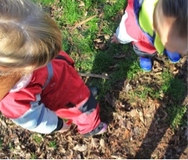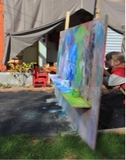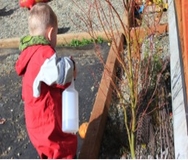Nature and Kindness Connection: Part 2

How “alive” is your classroom?
The following is the second of two blogs that explore the connection between nature and kindness through the stories of those who care for young children.
The Early Childhood Care and Education students from the North Island College passed along one of their readings on the topic of nature and kindness. Nurturing Children’s Biophilia: Developmentally appropriate environmental education for young children was written by Randy White and Vicki Stoecklin. The article promotes the many virtues of early childhood environmental education. The authors describe both German Waldkindergartens where children spend the entire day outdoors as well as Forest Kindergartens that have sprung up in other European countries. They write, “during early childhood, the main objective of environmental education should be the development of empathy between the child and the natural world.”
Fortunate to live in beautiful British Columbia, I have become aware of some of these programs initiated closer to home. For example, Dr. Enid Elliot is a faculty member of Camosun College and the University of Victoria and has played an integral role in the launch of Canada’s first Nature Kindergarten in the Sooke School District. Into their second year, the Nature Kindergarten is working with the local post-secondary institutions to publish the quantitative findings and rich curriculum documentation.
My interest and intrigue propelled me to take a field trip of my own. In my own small town of Port Alberni, Sincerity Outdoor Playgroup opened its doors in the cold, wet months of January 2014. Early Childhood Educator Lisa Sawatzky runs a 4-hour program for young children that is spent 100% outside. I arrived one morning to hang out with her and the children in her care. Lucky for me, it was a crisp, sunny day – but the children don’t mind the weather as they stay warm and dry in their wet weather gear.



Lisa’s philosophy about the social and emotional benefits of nature –based programming has been confirmed by her experiences outdoors as compared to traditional childcare settings. Her strongest observation relating directly to the development of empathy and compassion is the effects of the children surrounded by things that are alive. For the young ones (2 and 3 years old), the concept of being kind to plants and insects is emerging – developmentally, children are just beginning to make the connection that even things that don’t “talk” can be alive. By spending such a concentrated time outside, the children are constantly exposed to watching things grow as well as die. To highlight this lesson, the children showed me a tree filled with “helicopters” and fascinated me with their ideas and descriptions of the relationship between the seeds, the wind, the dirt and themselves.
Another key quality that Lisa sees fostered in an outside setting is respect. The outdoors has natural hazards and the children learn quickly about unsafe things. Lisa observes both a heightened respect for nature as well as for each other because of the risky elements. She sees children helping each other more often, watching out for younger children and paying attention to what is happening around them. “An outdoor program requires a great deal of trust. The children know that I must trust them in order to keep everyone safe.”
When I asked about working with children who come into the program with behaviour challenges, Lisa immediately reflected on the young girl who had experienced a tremendous amount of growth. Indoors, she became quickly over stimulated and her behaviour became challenging for both teachers and other children. Outdoors, she noticed that the wide-open space and the way sound disperses significantly contributed to a more even level of behaviour.
Thank you Vicky, Daylin (Part 1) and Lisa – your experiences and observations have provided me with a new perspective on WHY being outdoors is such a great choice and how it can foster kindness and compassion in young children.







Comments
Post new comment